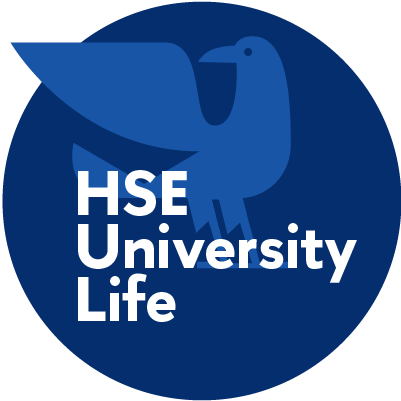- A
- A
- A
- ABC
- ABC
- ABC
- А
- А
- А
- А
- А
Three Original Educational Projects
© Daniil Prokofyev/ HSE University
On January 18, the winners of the 2021 HSE Fund for Educational Innovation competition presented their projects at the ‘Teachers’ Marathon’. A total of 49 applications were submitted to the competition, 17 of which were named the winners. Below is our overview of three of them.
Plagiarism Detection System
Task: to automate the plagiarism-checking process for assignments
Senior Lecturer at the St Petersburg School of Economics and Management
My project came about in 2020, when I was teaching a Data Culture course on ‘Information Management’ for students in two years of studies—about 400 students at the same time. It was a hybrid form of study and the number of students was huge, so I needed an effective tool to automatically check the code-writing assignments.
I trialled existing solutions, but they did not suit me well. The classic antiplagiarism system does not have a cross-checking feature within a class or among students in the same year of studies. The Stepik platform detects plagiarism with very low precision (if the student simply changes the name of a variable, the system does not detect that the assignments are similar). I also tried the MOSS system (an open project by Stanford University). It works well with programming languages like C++, but it is not effective with Python or plain Word text.
My development works as follows: students upload their completed assignment to Stepik, the teacher downloads the solutions, and the system compares the submitted assignments in pairs. Importantly, it reflects the time of uploading (if there are any doubts, the teacher can check who uploaded the assignment first). The teacher can also track the problem-solving process, logic and attempts.
After the assignments were completed, I downloaded all the solutions, compared the students’ codes for similarity under different metrics, and used algorithms to group similar solutions by symbols in coalition—kinds of clusters of joint solutions. There was a big group of students who presented unique solutions. In order to detect plagiarism, I gave the students assignments that were slightly different. It is statistically significant that students in the group that was not affected by copying initially continued to work independently in the second assignment. This is how my development gave me an opportunity to track and confirm the scale and coalitions of copying.
So far, my project includes code in Python and R and doesn’t have a user-friendly interface. But my colleagues have already expressed interest in the system, and perhaps in the near future I’ll manage to put it together in an app.
‘Completing an Order’ Business Game
Task: to familiarise students with the operational processes of a company, show their connection to other processes and functions, and demonstrate how they impact the achievement of the company’s key performance indicators.
Senior Lecturer at the HSE Graduate School of Business Department of Operations Management and Logistics
Lecturer at the HSE Graduate School of Business Department of Operations Management and Logistics
Students of our ‘Logistics and Supply Chain Management’ programme and other School of Business programmes complete a lot of cases and projects aimed at solving various business problems, learn to build financial models, work in teams, etc. But they usually don’t understand how difficult it is to build operational processes in companies that deal with product flows (order picking, packaging, labelling, transportation, various manufacturing processes, etc). They also sometimes fail to understand how these processes impact the achievement of the company’s goals.
When we created our project, we were inspired by practices implemented by big FMCG manufacturers and retailers in which even top executives sometimes participate in operational processes, such as working in a shop, picking orders, etc. One reason for this is the need to stay ‘down to earth’ and identify non-optimal aspects of processes at various levels in a timely fashion.
We combined gamification and 3D printing by creating a scale-down model of a warehouse to help students visualise the processes of material and information flows.
Our business game imitates the process of order fulfilment: students have a storage area with products, equipment for picking, labelling and packaging, as well as customer information on the order, such as the product ID, number of items in the order, packaging requirements, etc. They need to complete the customer’s order in line with the requirements.
The participants are split into two or three teams and compete in various aspects that are important to customers: order fulfilment precision, speed, punctuality etc. Each team independently models the order fulfilment process and distributes roles between the team participants (such as inspectors, analysts, pickers, packers etc).
While the process is seemingly simple, it consists of many steps that can be completed in different orders. We also included certain complications in the game, such as an incorrectly completed order form, illogical layout of areas in a warehouse, boxes that are not aligned with the size of the platform etc—things that happen in real-life company processes. That is why it is almost impossible to complete the order ‘ideally’, and students have to prioritise the parameters.
In the end, we assess the teams’ results and discuss how fast and correct their order fulfilment was, what strategies they used, whether there were process violations, and what non-optimal things they found in the processes at our mini warehouse. The game helps them see how administrative decisions impact operational processes and performance indicators, how processes are modelled, how planning and analysis are done, how optimisation solutions are made, and how coordination is built in a team.
Simulation Video Game in English
Task: to teach students how to build effective business communication with colleagues from other countries
Senior Lecturer at the Department of Foreign Languages (HSE University in St Petersburg)
Associate Professor at the Department of Foreign Languages (HSE University in St Petersburg)
Speaking a foreign language is not enough to ensure successful communication in an international environment. One should also know the cultural code of the country with which they do business, as well as understand the specifics of non-verbal communication and the values and traditions of other countries’ business cultures. We came up with the idea of the game when we realised that students of the programme in International Business and Management had trouble communicating with people from other cultures despite their high English-language proficiency.
To solve this problem, we created a game in Smart LMS based on material by TBS Software, an international construction and architecture company and resident of the Swiss techno park in St Petersburg.
The goal of the game is to create an advertising concept for the company. In the first stage, students go through a selection process for an internship at the company (special blocks of assignments were developed for this stage: CV, motivation letter, interview). If they pass, they play the role of interns, take a training session and study the cultural specifics of three countries whose markets the company plans to enter. In the last stage, the students prepare a marketing campaign for TBS Software’s target markets and in the end, get a virtual contract.
The simulation is very high-quality and colourful, which makes immersion in the language environment a thrilling process: participants find themselves in a virtual techno park, they can choose a character and complete assignments at a time that’s convenient. We are now fine-tuning the game, trying to take into account the needs of students who study online and on-site at different campuses.
In March, the spring competition of educational innovations will take place, giving teachers an opportunity to present their new ideas and teaching practices. Information on the opening date for applications will be published on the Fund webpage.






